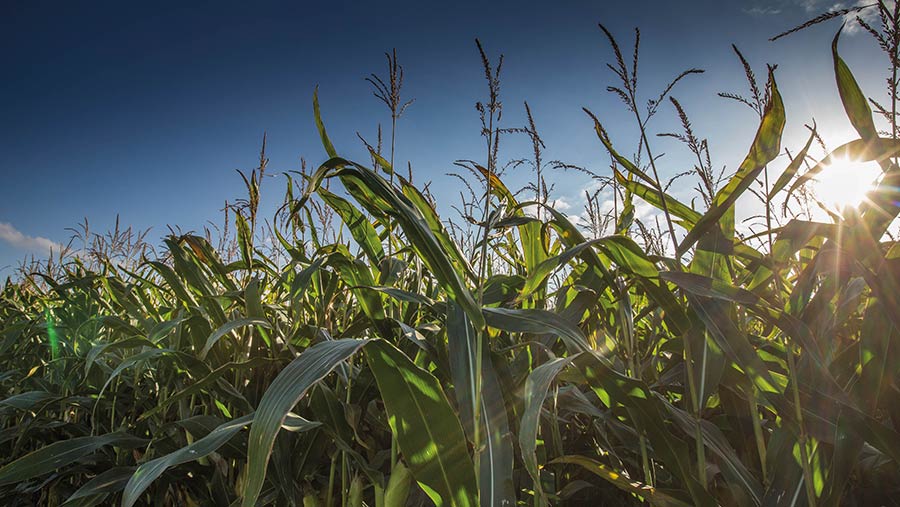Should bulky maize crops be cut high?
 © Tim Scrivener
© Tim Scrivener This year’s maize crops are very tall in many areas and will provide a lot of forage for growers, initial reports from Farmers Weekly’s first Maize Watch of 2021 shows.
With a lot of grass silage already in the pit, livestock farms may wish to consider cutting high to increase the energy density and starch content of their maize silage, says Neil Groom, technical director for Grainseed.
Why increase cutting height?
Work done by the Maize Growers Association (MGA) showed that cutting at 50cm high instead of 20cm increased both silage dry matter and starch content by 2% and improved overall digestibility by 0.3 metabolisable energy (ME).
See also: How a farmer cut purchased feed costs by growing grain maize
This is because the bottom of the stems not being cut contains more lignin and is lower in digestibility.
However, yields are reduced by 5t/ha (2t/acre) and growers will also need to think about how to manage the longer stumps in the field.
“If you are intending to plough [the field] they are no problem, but if you are min-tilling wheat into the maize stubble then the stubble will need mowing or rolling to remove the upright stalks,” advises Mr Groom.
Many grass silages are lower in overall energy this season due to lower sunlight levels, so producing an energy-dense maize silage will allow balanced rations to be fed this winter.
Harvest
Last year’s maize harvest started early due to lack of rain, but this year’s harvest is going to be a more traditional start of mid-September because of lower sunlight hours throughout the summer.
However, the recent warm spell will accelerate starch laydown as the crops rapidly mature, predicts Mr Groom.
“The plants naturally want to finish and produce grain and the movement of sugars in the leaf to form starch in the grains has recently accelerated,” he adds.
To avoid getting caught out, growers are being advised to assess their crops twice weekly as they approach maturity.
“Walk into the crop off the headland, open up six cobs in a row and assess their maturity. We want the grain to be fully ripe with just a tiny drop of moisture which can be squeezed out of the base of the grains,” he says.
Plant stems should also be assessed – cut them at the base and twist the stem to see if any moisture can be wrung out.
Samples should then be taken for an oven test or MGA air fryer test to accurately determine crop dry matter before making decisions on cutting with your contractor.
For information on how to carry out these tests read the MGA’s Maize Harvest Guide (pdf).
Maize dry matters around the UK |
||||
|
Site |
Drill date |
Height above sea level (m) |
Crop dry matter 7 September |
Increase from previous week |
|
Petworth, Sussex |
27 April |
50 |
27.3 |
|
|
Harleston, Norfolk |
1 May |
30 |
25.5 |
|
|
Crediton, Devon |
22 April |
118 |
24.1 |
|
|
Ticknall, Derbyshire |
26 April |
67 |
24.3 |
|
|
Narbeth, South Wales |
11 May |
32 |
23.7 |
|
|
SRUC, Dumfries, Scotland (under plastic)* |
|
45 |
No sample |
|
Note: Variety is Es Tommen except * which is Es Lovely
